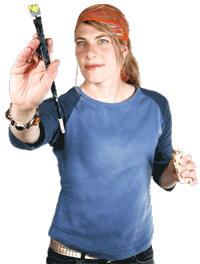At WiseGEEK, we're committed to delivering accurate, trustworthy information. Our expert-authored content is rigorously fact-checked and sourced from credible authorities. Discover how we uphold the highest standards in providing you with reliable knowledge.
What are Ukiyo-E?
Ukiyo-e are Japanese woodblock prints and watercolors which date from the 17th to the 20th centuries. Many ukiyo-e depict landscapes, everyday scenes from city life, stylized scenes from the pleasure quarters of Japanese cities, and scenes from Japanese history and folklore. These distinctive woodblock prints are considered quite beautiful by many art fans, and they can be found on display in numerous galleries and museums all over the world. It is also possible to find bound books with collections of some of the finest ukiyo-e, and many of these books are works of art in and of themselves.
In Japanese, ukiyo-e means “pictures of the floating world.” The term “floating world” was coined to describe the insular, carefree, and pleasure seeking world of Japanese cities during the Edo period, when a period of relative peace allowed the arts to flourish in Japan. As regions of Japan became highly urbanized, a new class of artisans and artists emerged, allowing the ukiyo-e to flourish.

Early ukiyo-e were done in black ink only, and sometimes hand-colored with the use of watercolors. With the development of color printing processes, the world of ukiyo-e expanded considerably, and these prints became accessible to people in a wide range of classes in Japan. Merchants in particular could purchase prints to decorate their homes and businesses, and ukiyo-e were also used to illustrate books and to promote various events and venues.
Some notable masters of the art include Hiroshige and Hokusai, who are well known for their often ethereal, haunting woodblock prints. The establishment of a master and apprentice system for woodblock printing emerged fairly early in Japan, with named masters attracting apprentices who wanted to study with the best talent in the field. Some artisans focused on specific themes, like the worlds of geisha, kabuki actors, and sumo wrestlers, or the rich landscape of Japan.
Some people also consider modern Japanese woodblocks and watercolors to be a form of ukiyo-e, especially when they portray real-world Japan in a stylized way. Others feel that the production of ukiyo-e was limited to the Edo and Meiji periods in Japan, and that a new term should be adopted to refer to more modern works, reflecting the huge shift in Japanese culture which occurred in the 20th century, when Japan became much more open to the West while it struggled with its cultural and collective identity.
AS FEATURED ON:
AS FEATURED ON:










Discuss this Article
Post your comments